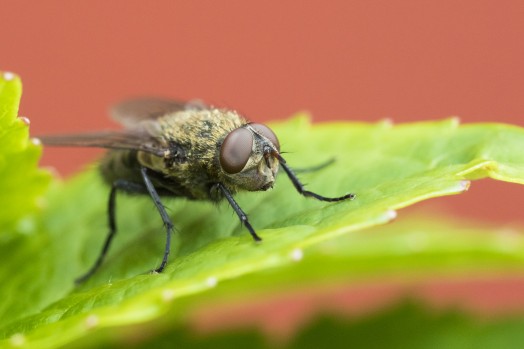Pest Control During Lockdown- How to get rid of cluster flies in your home
Thursday 7th May 2020
A DIY Pest Control Solution to Eliminate Cluster Flies
Update March 2021- Unfortunately Cluster Fly Traps are no longer available. For an aternative why not try AtrapaFlyTM Plug-in
Cluster fly infestations are both unsightly and a nuisance, but sadly a common occurrence in many homes. Swarms of this fly congregate around windows during autumn and winter as well as in attics and wall voids. Unfortunately, your lovely warm, cosy home provides the optimum environment for hibernation.
Steps to rid yourself of cluster flies around your windows
- Wash the windows inside
- Install a cluster fly trap using the sticky tape provided
- Sit back and watch
Have a look at the video and info below to get to grips with cluster flies in your home.
The life cycle of a cluster fly is somewhat unusual. During spring, adult females lay their eggs in the soil. After just 3 days, the larvae hatch and burrow down into the soil, each in search of a host to enable it to develop. The larva enters the body cavity of an earthworm where it remains for 2-3 weeks, using it as a food source. Finally, the larva pupates inside the earthworm before emerging as an adult fly. There are up to four generations of cluster fly each year.
If you are wondering how you can identify a cluster fly from another species of fly such as the house fly, there are a few tell-tale clues. Firstly, cluster flies are slightly larger than house flies. Secondly, their wings overlap at rest. Thirdly, cluster flies are darker than house flies and have golden coloured hairs on their thorax and lastly, they move slower than the house fly.
Contrary to popular belief, cluster flies do not pose a hazard to health, and they are not indicative of a dirty home. They do not signal that a rodent has entered the home and died either. Adult flies are herbivores and mostly feed on flowers, unlike the house fly which feeds on decaying matter and faeces, amongst other things. What’s more, cluster flies do not breed indoors or lay their eggs on food. They are merely an annoyance and one that is likely to recur year after year.
So, why do cluster flies make a beeline for your home in the autumn if they are not interested in feeding off your plate or breeding on it? These flies cannot survive the cold winter temperatures and seek out a warm site offering shelter and protection. Cluster flies are strongly attracted to light and so are naturally drawn to windows. If you have an infestation, you will likely see a few individual flies here and there before discovering the full ‘cluster’ hiding inside your closed windows or attic. One preventative measure you could take is to seal every possible entry point so that the flies cannot gain access. That’s right, every nook and cranny of your home. This is a tremendous task for any homeowner to undertake and one that we would not recommend carrying out on a whim.
For cluster fly infestations, we would normally recommend that you seek help from an expert as the number of flies in your home can be overwhelming. However, we appreciate that during this time of crisis as the nation battles with Coronavirus, you may not want a pest control expert entering your property, and we completely stand by your decision. But we don’t want you to feel that you have to share your home with thousands of bothersome cluster flies that will leave excrement stains on your windows and walls.
So, what do we propose you should do? Well, you could swat the flies or suck them up with the hoover, as they move very slowly compared to other species of fly, but sealing every entry point in your home as a tactic would expend a great deal of time and effort, so we have another solution that we think you might like to consider. There is a great product available from the Dealey online shop. The ‘Cluster Buster’ is non-toxic, organic, renewable and 100% chemical-free trap specifically designed to eliminate cluster flies. It should be placed inside the top edge of a window where flies naturally congregate. The trap contains a layer of quicksand, and when the flies enter the trap, their natural burrowing instinct will draw them into the sand, and they will bury themselves. Unluckily for the flies, the quicksand rapidly dries them out, and they die. These traps are very effective, and multiple traps can be used simultaneously if more than one window in the home is susceptible.
Head on over to the Dealey online shop today and purchase a Cluster Buster.

